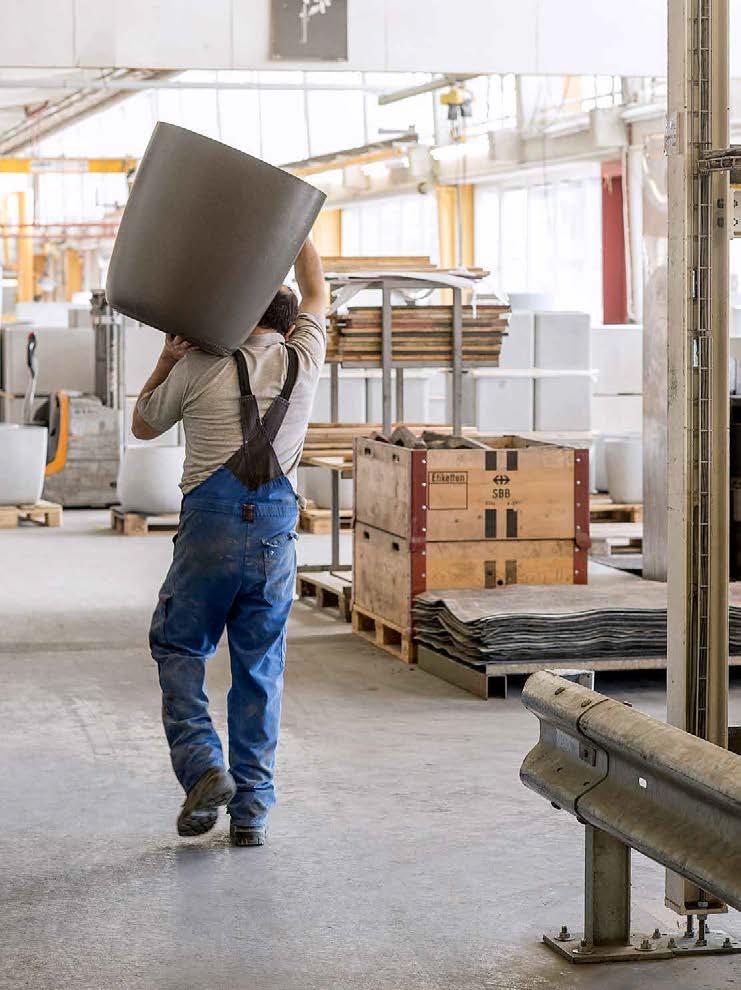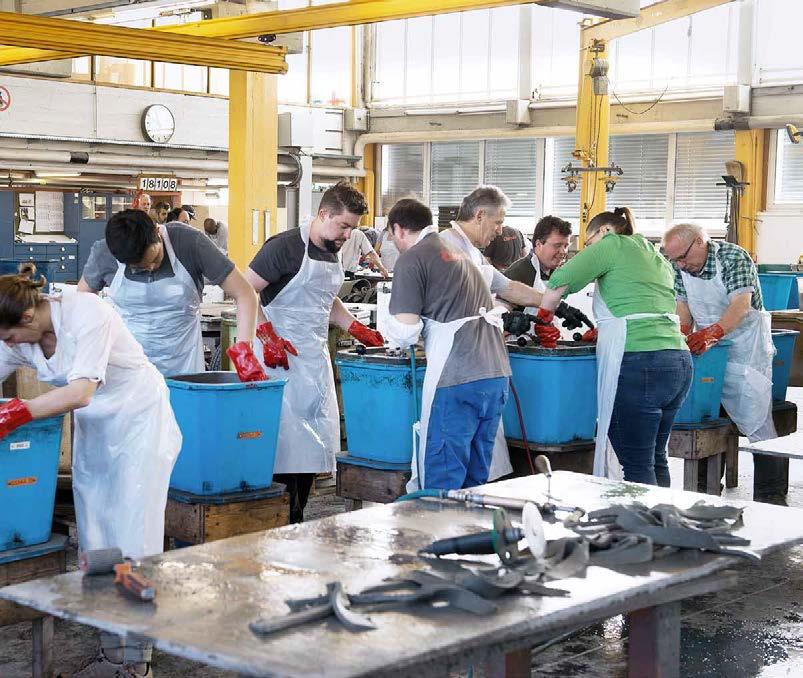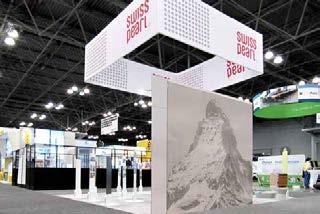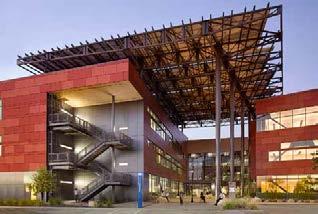
7 minute read
MAKING-OF
MAKING-OF
Shaped by Hand
Twice a year, the Eternit (Switzerland) AG’s factory and its molding shop in Payerne open their doors to the public. Customers have the chance to learn about the manufacture and processing of the raw materials and are able to create their own simple vessels in the molding shop.
Payerne is near Fribourg and not far from Lake Neuchâtel. The town, with its roughly 10,000 inhabitants, is known for the Swiss Air Force’s military airfield, which is the largest in the country.
However, located close by the railway station is one of the fiber cement manufacturer’s five factories. Not only are the well-known small-format panels produced here, but Payerne is also home to one of the firm’s two molding shops. Here, individual projects are also worked on in addition to the manual serial production of planters and seating furniture.
Every object begins from exactly the same starting material as the roof and façade elements: moist panels of cement, pulp, and synthetic fibers. A felt stretched out on roles continually submerges in a basin holding the raw mixture: layer after layer, until the desired material thickness has been achieved. After all, the Austrian Ludwig Hatschek invented the production process in 1900, and rebuilt a paper machine for this purpose. “On our machines, we can produce panels with a width of six to twelve millimeters, and that at a length of up to three meters,” explains Engin Cuskun, product manager. “A natural limit is reached at a thickness of roughly fifteen millimeters, as the thicker the panels are, the heavier they are, and more difficult for the former to work with.” The completed, layered panels are taken from the felt, the forms for the small-format elements punched, and then finally, pressed. The water is drained, and the binding process of the cement begins. In contrast to this process, the starting material for the molding shop is not pressed, but instead, cut in a moist state
36
with corresponding stencils. The molding blanks are placed on the work bench in the neighboring hall for further processing. “With the hand-molding process, the moistness is necessary for the formability. As soon as the molding blank is cut, we have roughly two to three hours to process the material,” explains Cuskun. “After that, it becomes too brittle—sure, it is possible to wet it, but the stability of the material suffers.” From the molding blanks, the craftsmen shape the planters and furniture in the appropriate wooden forms. In doing so, every molding form is roughened, assembled, and condensed manually and also with a hand compressor. This is hard physical labor, both the lifting and the setting of the panels in the forms. Small tears that might possibly arise can be corrected—however deep cuts compromise the vessels’ ability to withstand frost and are weak points in the statics.
Designers with whom the fiber cement manufacturer has already collaborated for a long time produce the ideas for the objects, or they arise in exchange with design schools. “Almost more important than the object itself, however, is that the necessary formwork is developed,” says Cuskun. “With some vessels, we can press the finished products out of the form with air pressure, others are opened via hinges, while others require two forms that are removed from the dried object in different directions.” The fiber cement factory develops the negative forms together with a local form builder who then produces them, while the manufacturing factory takes over the maintenance of the forms. In this way, over the past several years new series have been steadily developed that have been integrated into the company’s regular production. But customized production is also possible—our experience ranges from lamp shades to fruit bowls through to room dividers. “With a new development, one has to consider the material qualities, whether humans can produce it, and how it is put into and taken out of the mold,” concludes Cuskun. “If the material is not overstretched, and we remain within the formats possible for human and machine, in principle, everything is possible.”
Katinka Corts

On Manufacturing Day, which is celebrated two times a year, Eternit (Schweiz) AG invites its customers to visit the factory and the molding shop. In addition to a guided tour, visitors can also try their hand at producing their own simple vessels.


One of the currently five total production locations of the Swisspearl Group is in Payerne, in western Switzerland. Payerne is home to one of the two molding shops where planters, seating furniture, as well as molded pieces for roof weathering, among other items, are molded manually. At the locations in Austria and Germany, mainly façade and roof panels are manufactured. The factory in Slovenia produces primarily corrugated panels and molded parts.
SHORT MESSAGES

AIA 2018 NYC
It was the architecture and design event of the year! Within the framework of the official exhibition motto “Blueprint for Better Cities,” Swisspearl presented their aesthetic, sustainably produced, and long-lasting fiber cement panels at the 2018 Architecture Expo in New York City, which took place parallel to the AIA Conference on Architecture 2018. Swisspearl was pleased to be invited to take part in the fair once again and we completely redesigned our booth design, creating a prime showcase for our high-quality fiber cement products. The new design utilizes clean lines and modern flair, which allows us to optimally highlight our products. In the end, the AIA turned out to be an amazing exhibition for Swisspearl and all of our partners! Our brand new booth and products combined with the fantastic team, made this show an extraor— dinary event. conferenceonarchitecture.com
Design Versatility With StoPanel
The Atlanta based firm Sto Corp., world leader in cladding, air barriers, panelization, coatings, and restoration solutions, recently announced that the company’s prefabrication division, StoPanel Technology, is now partnered with Swisspearl, the inventors of fiber cement panels. The two companies have teamed up to offer a continuous insulation system that uniquely combines the convenience and cost-effectiveness of offsite panel manufacturing with the look and feel of an innovative, contemporary aesthetic. The inclusion of Swisspearl in the StoPanel line-up of prefabricated panel options provides owners and design professionals with a wide range of attractive fiber cement panel and color options along with the benefits provided when using a cladding that offers a rainscreen design. www.stocorp.com

Texial, Unique Through Hand Embossing

Innovative and sustainable products made of natural raw materials, such as the new large size façade panels Texial, are born of ingenuity and expertise. The fine surface structure has the appearance of a fabric and hand-embossing makes it consistently unique. Delicate nuances of color and the raw texture resulting from the mechanical embossing process highlight the authenticity of the work. A vibrant interplay of light and shadow creates a dynamic effect, making the façades appear almost like a piece of cloth. Texial is available in five colors. While the earth tones blend seamlessly into their environment, at the same time, they also make an impact because of their timeless nature. The natural, harmonic color spectrum underscores the character of Texial. blog.swisspearl.com
SELECTED BUILDINGS
Every year, a great number of building projects are carried out with Swisspearl. On the following pages, we present 14 particularly remarkable buildings.
In today’s architecture, building forms are the result of various influences. The urban planning context and the available property play just as much a role as alignment with the sun.
Architects seek to satisfy the complex conditions with multiform building volumes. For the composition and arrangement of the buildings they gladly combine diverse materials.
The specific look and feel of the building materials, the different surfaces and colors, help to distinguish the buildings. In this year’s selection, it becomes evident that different size panels and joints are used to clad multiform, polygonal building volumes. They are often combined with other building materials, such as wood, metal, brick, or natural stone. The material combinations provide structure, contrast, and variety. What can also be observed are the calm building shells that arise through uniform colors, formats, and the visual convergence of façade and roof.










